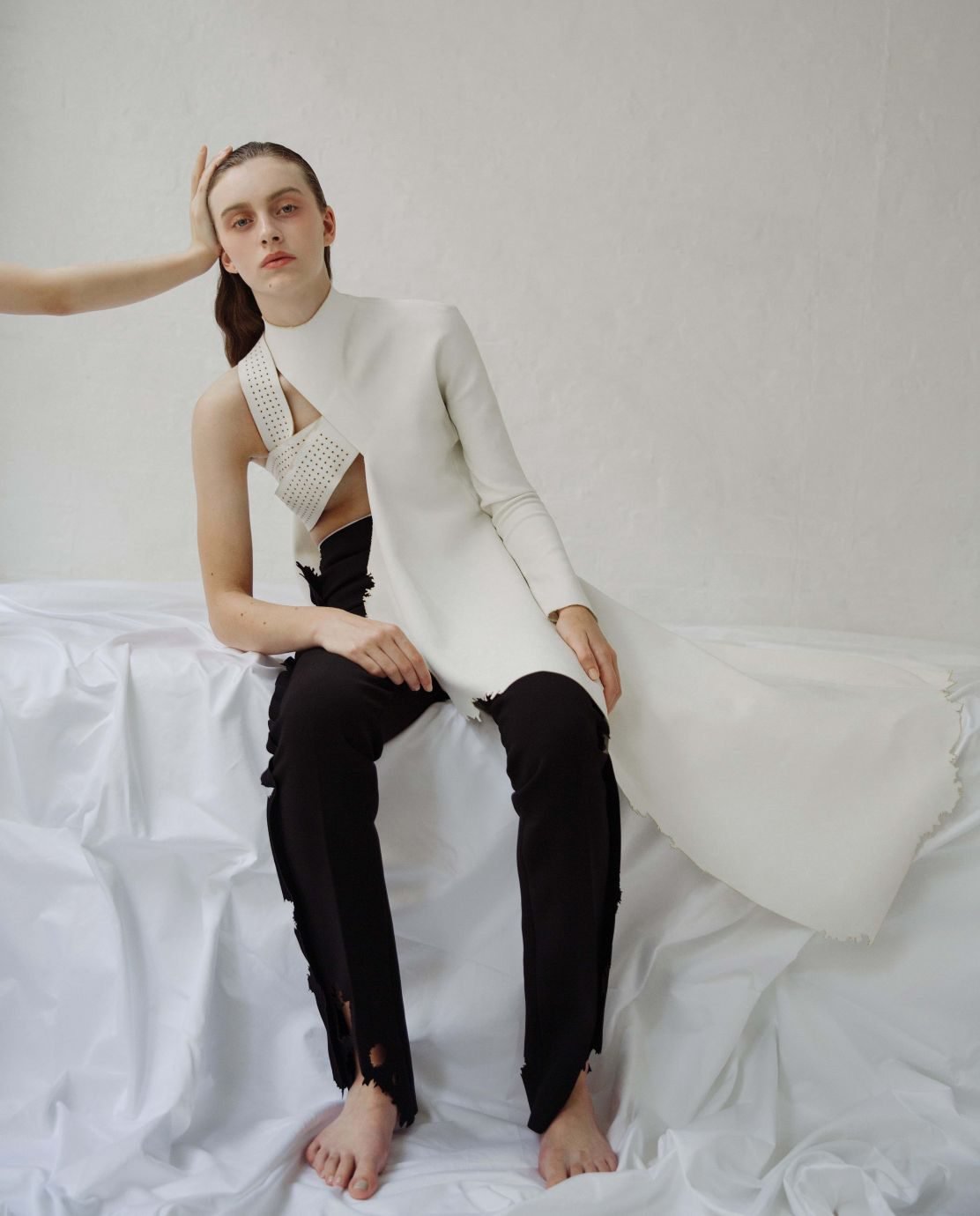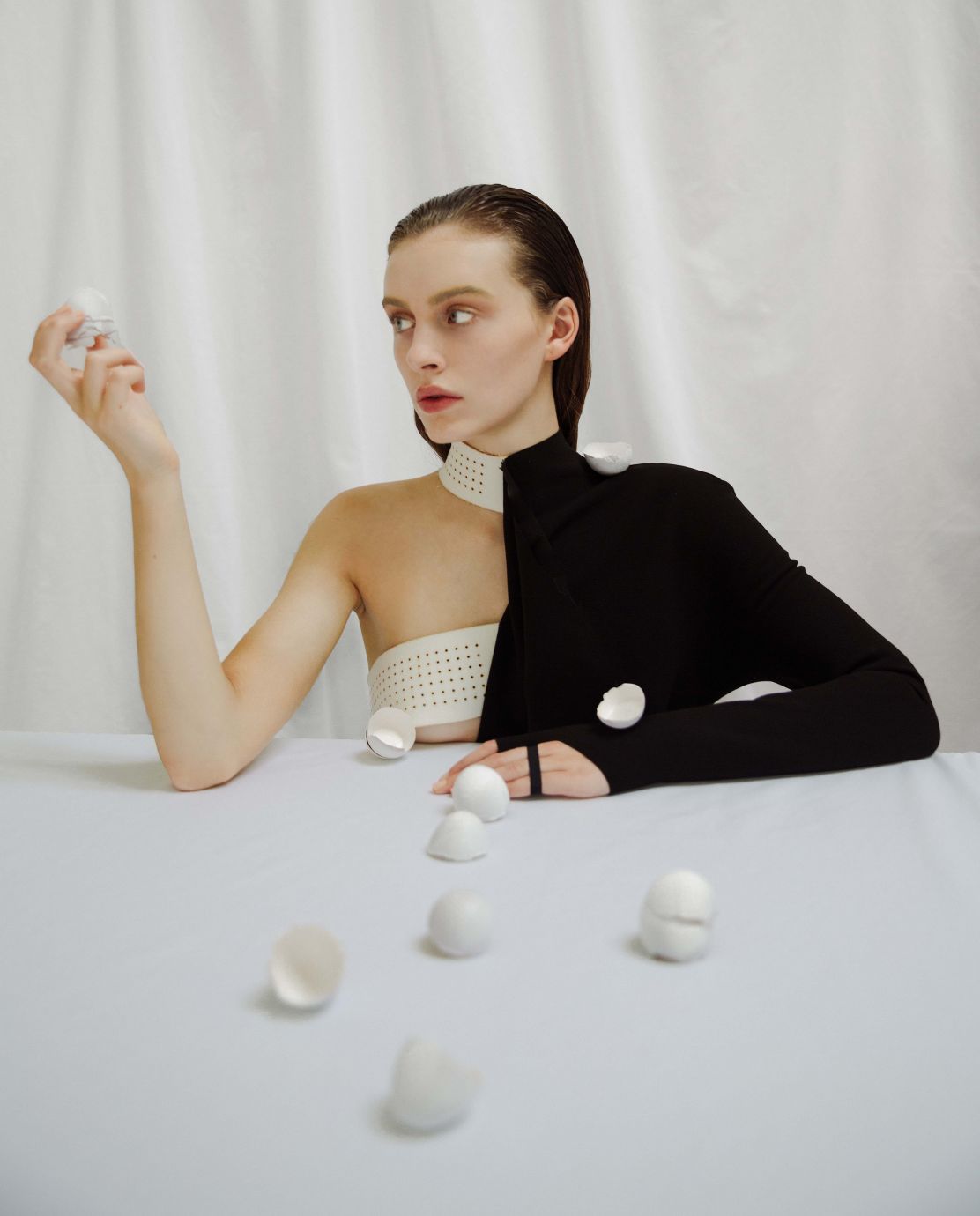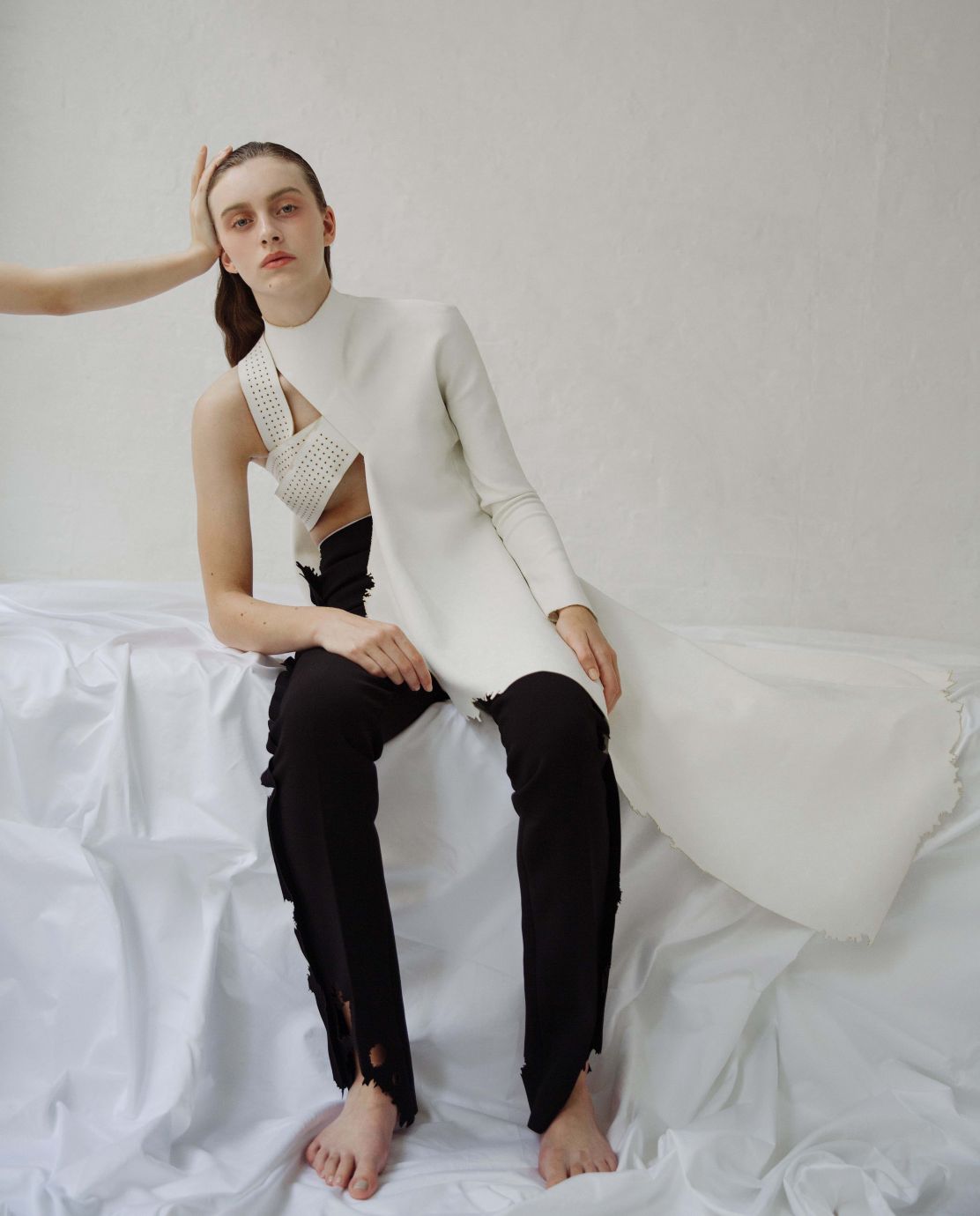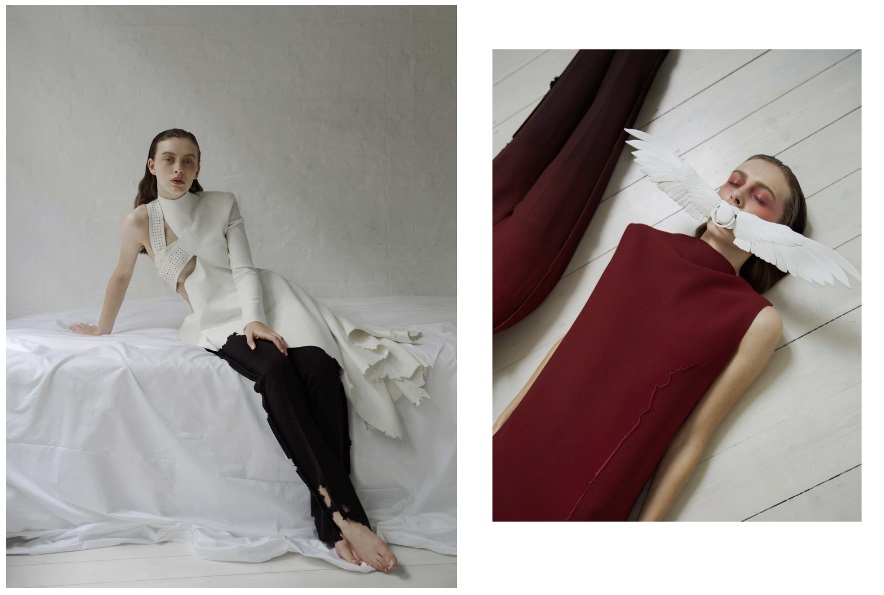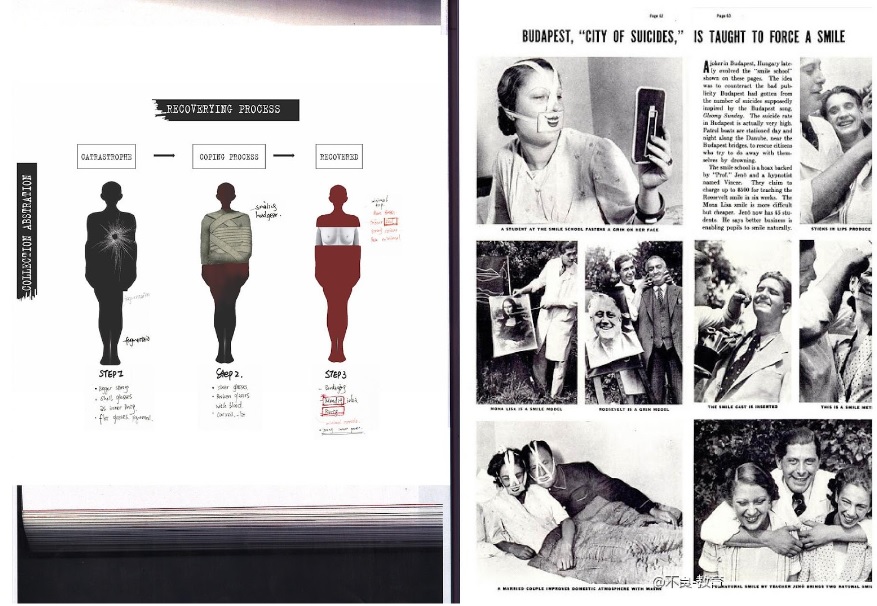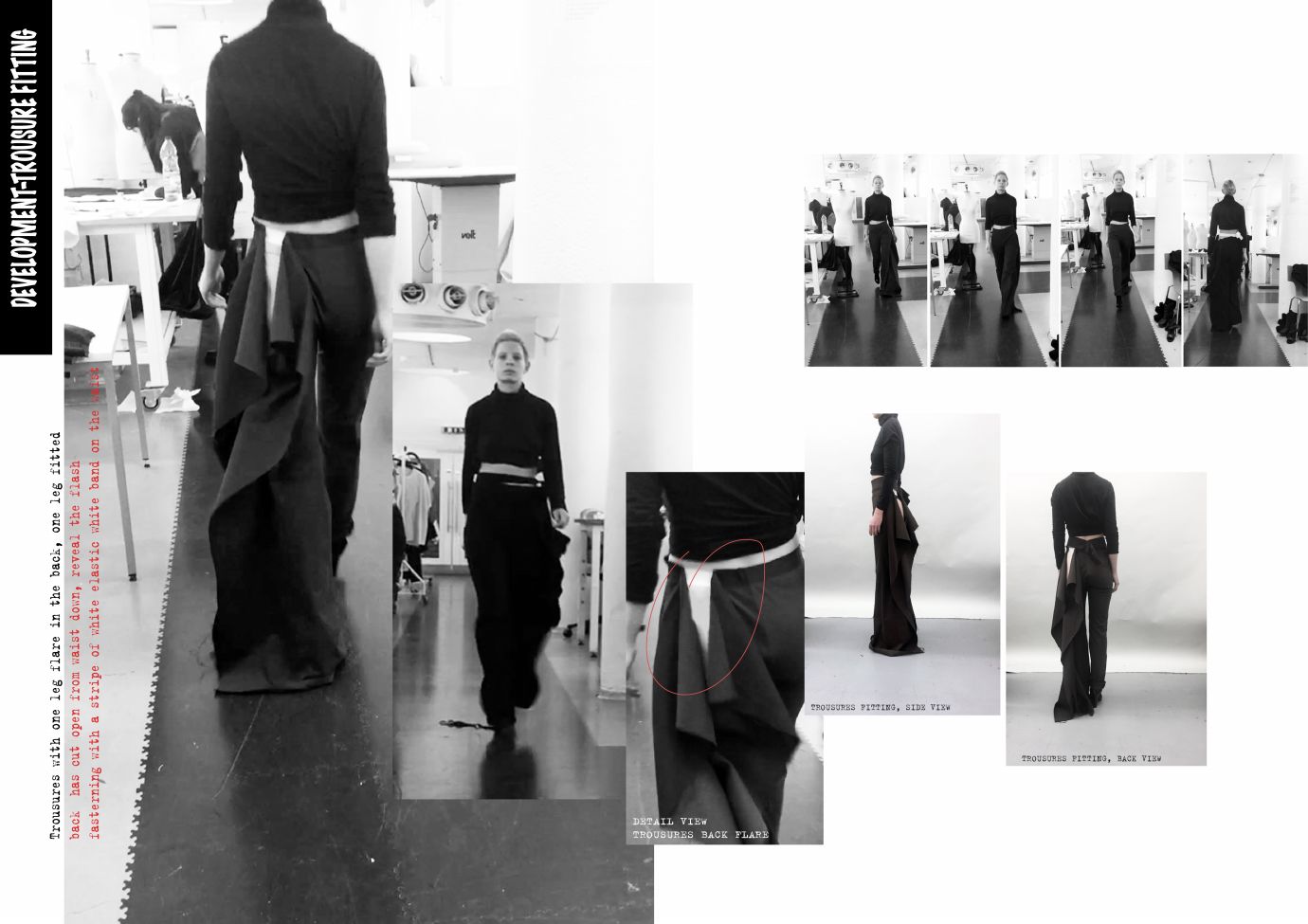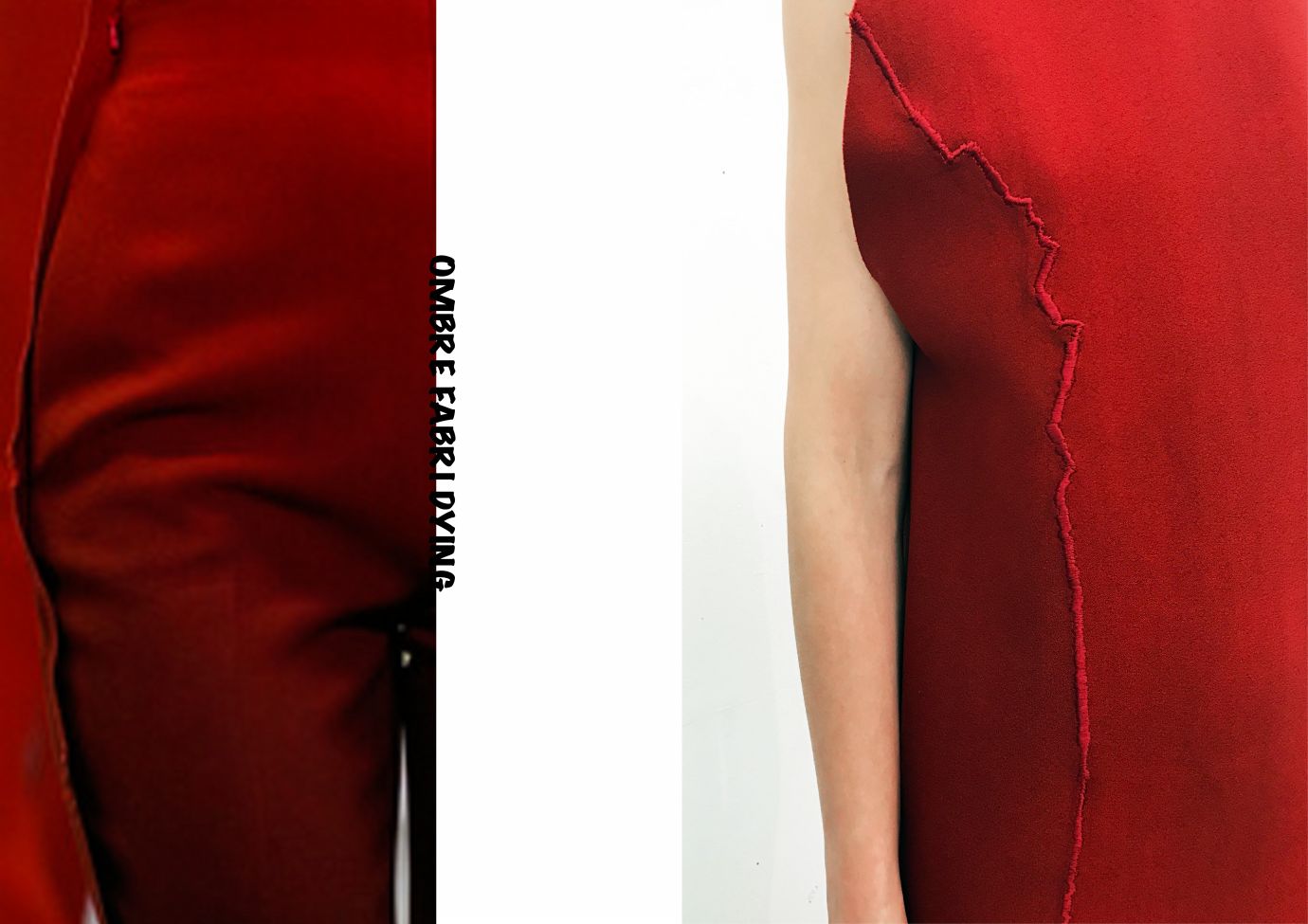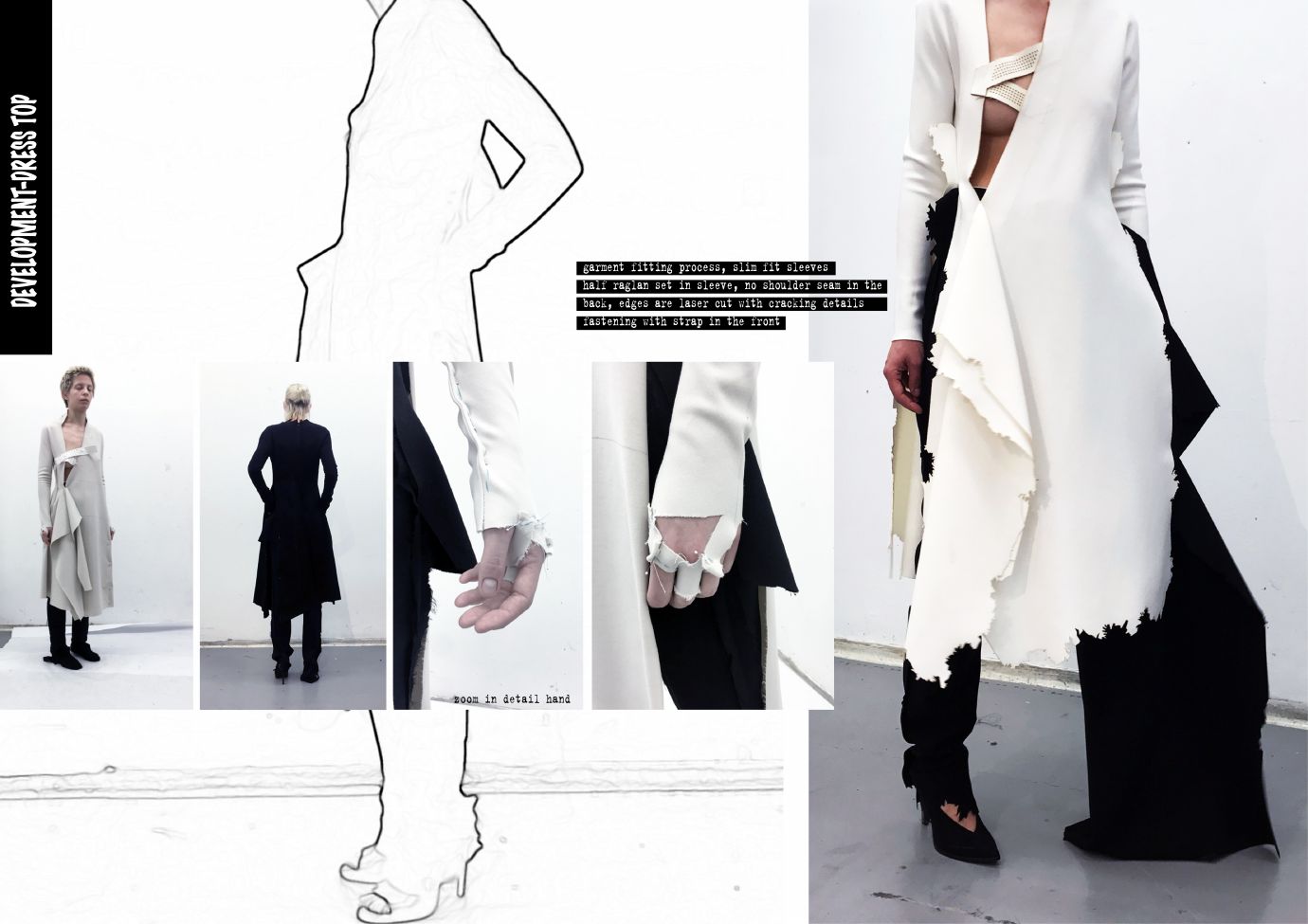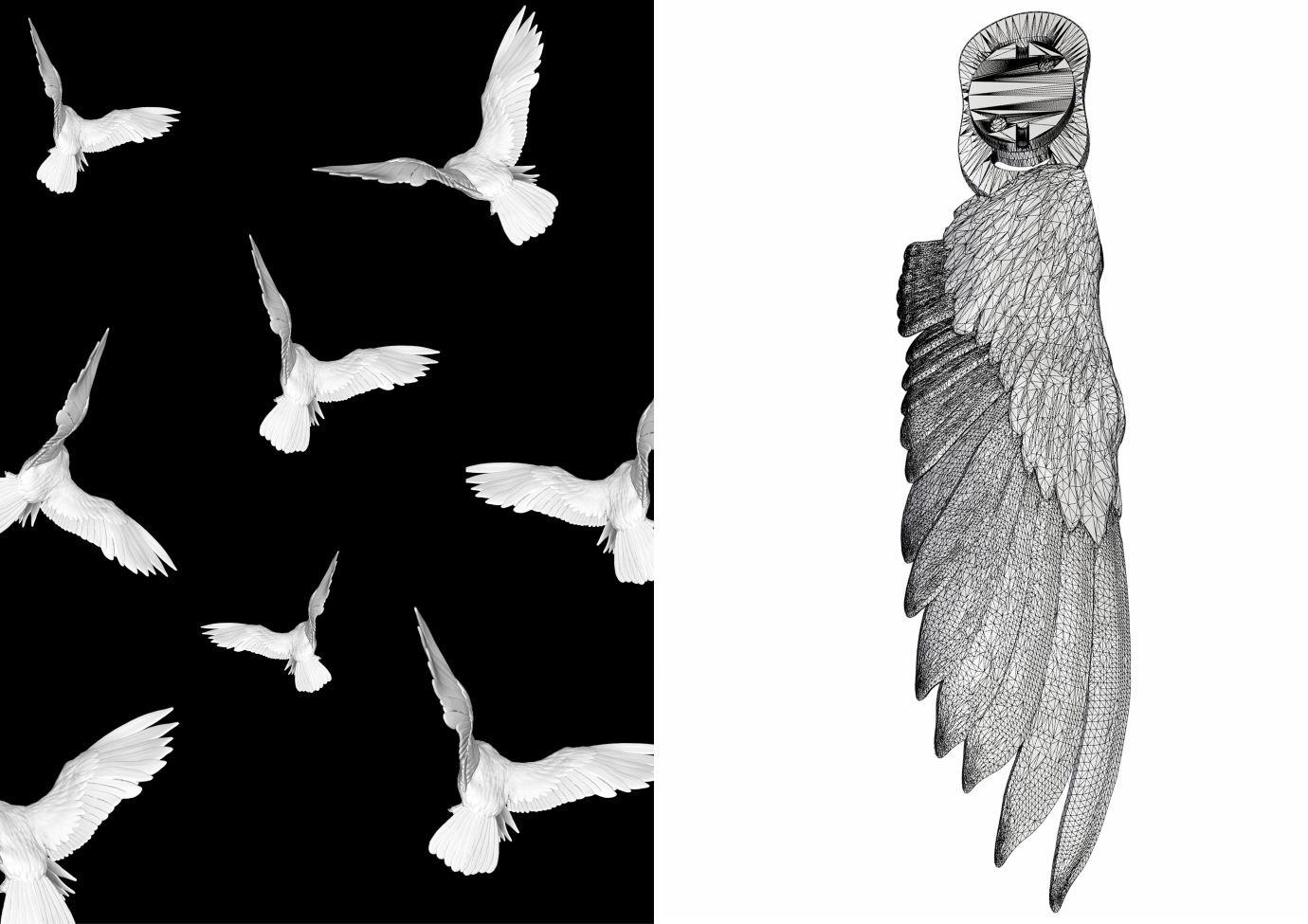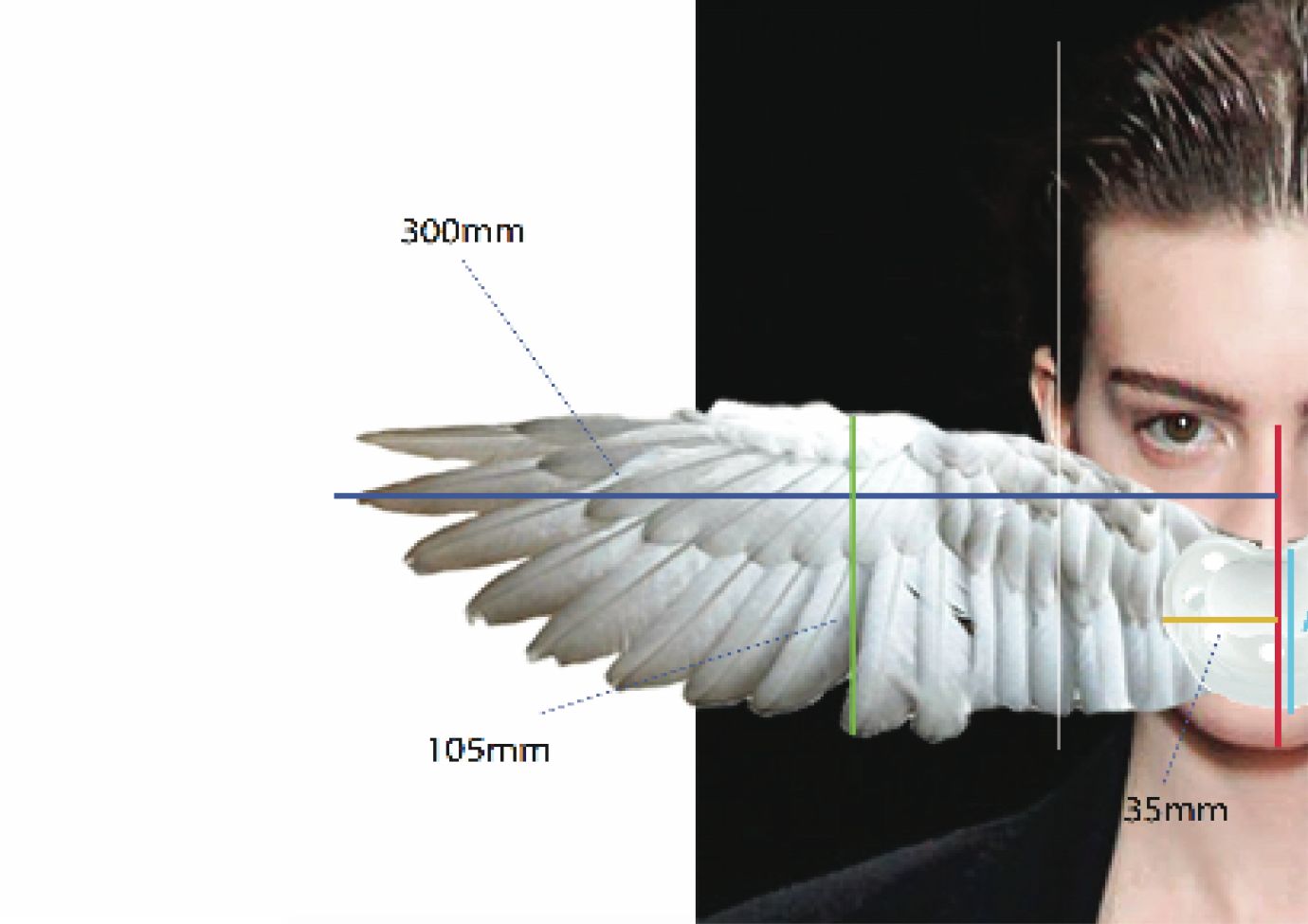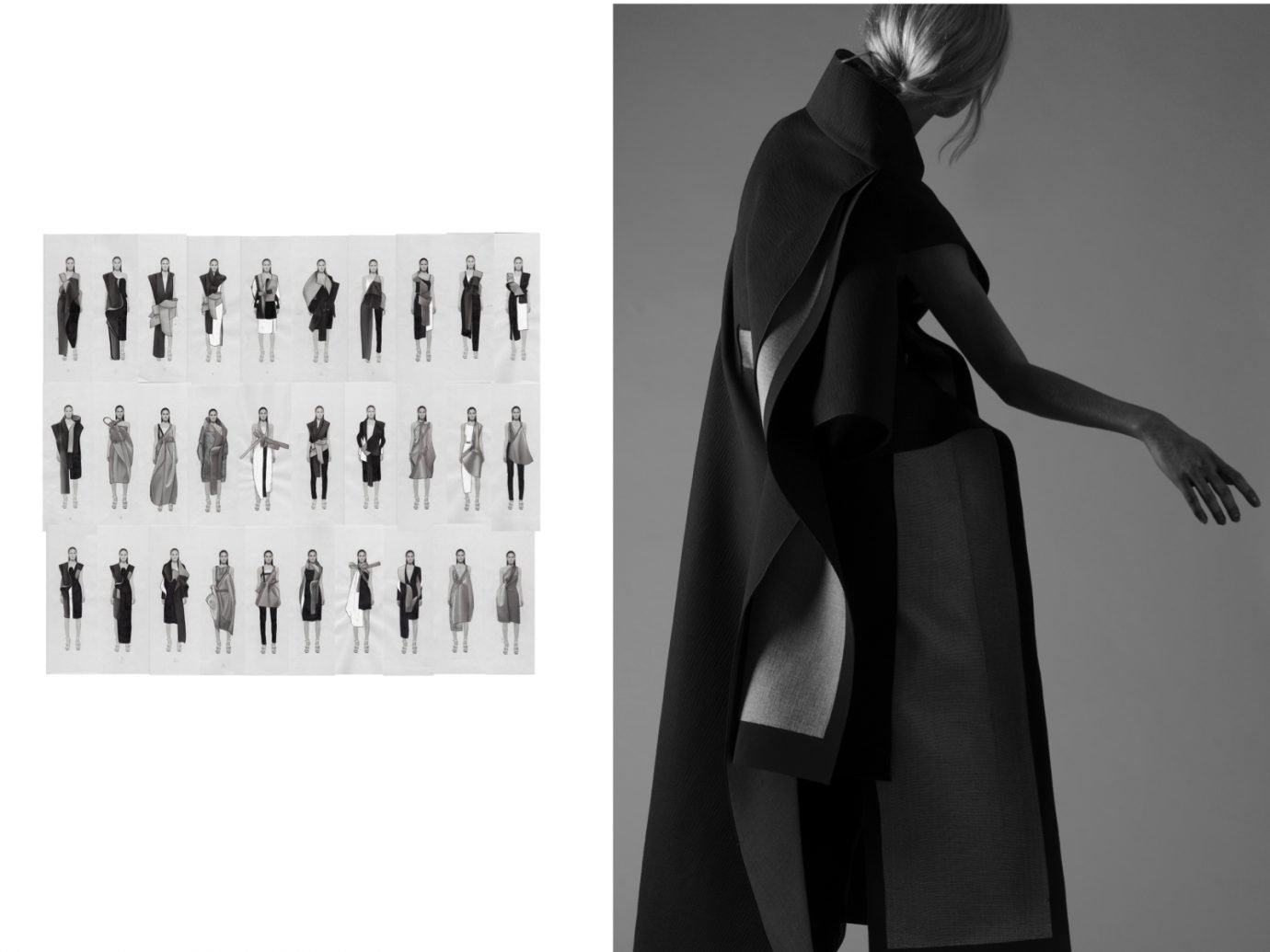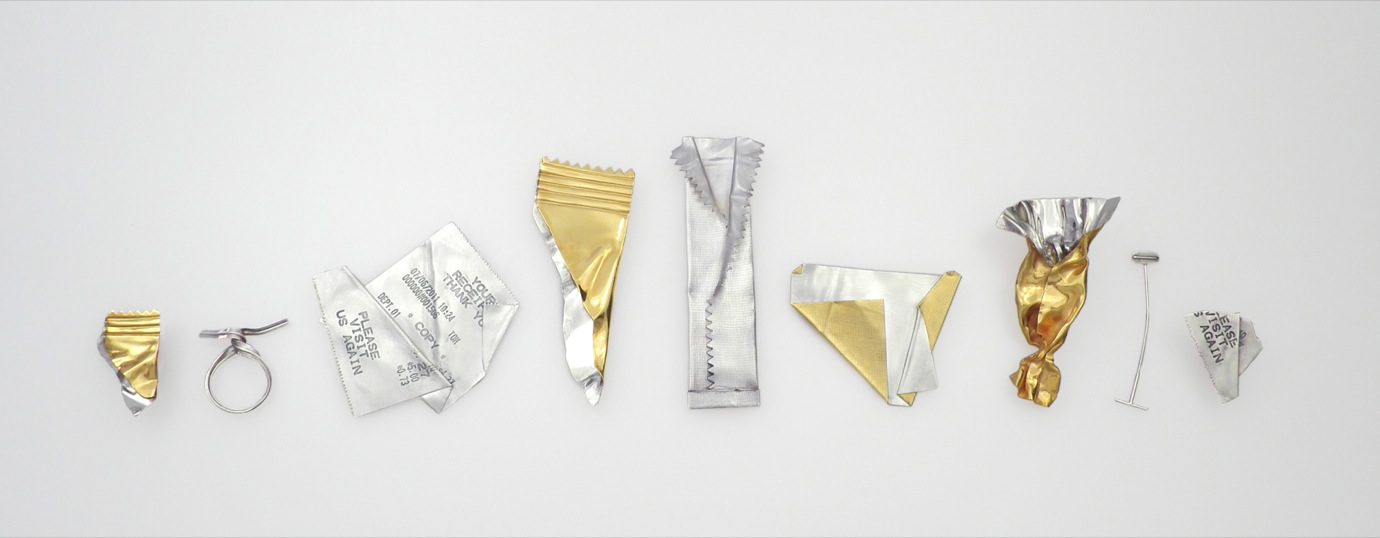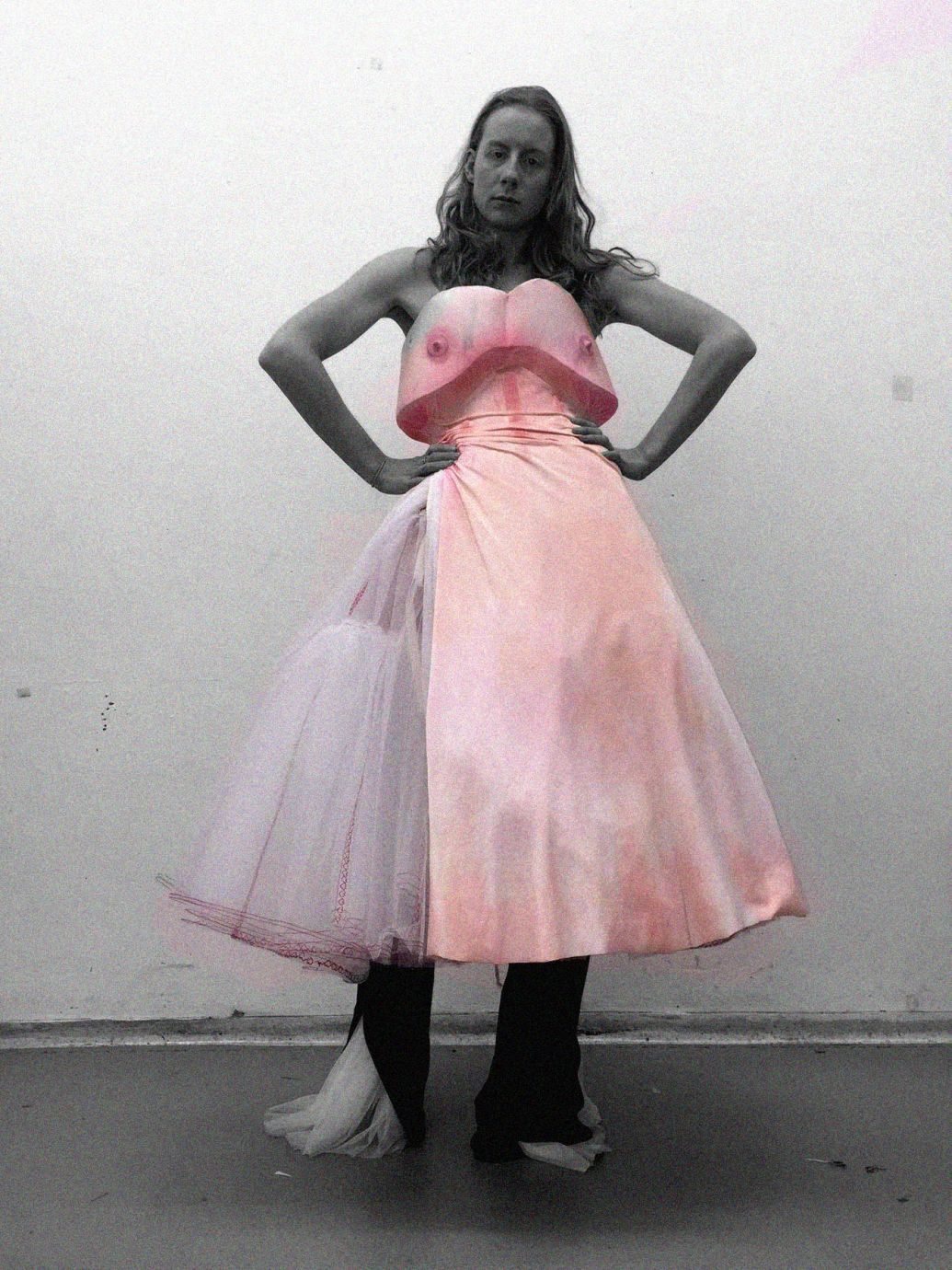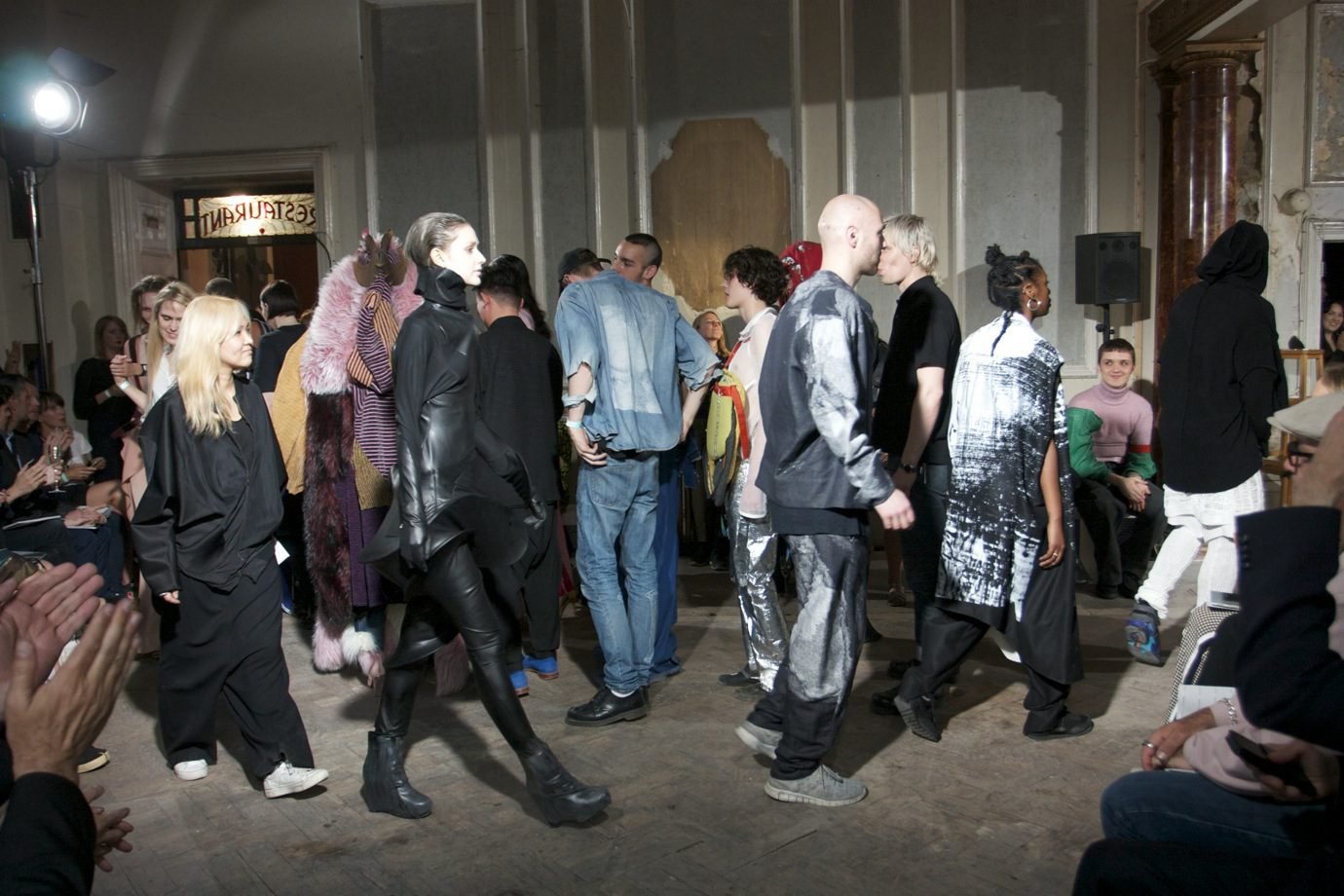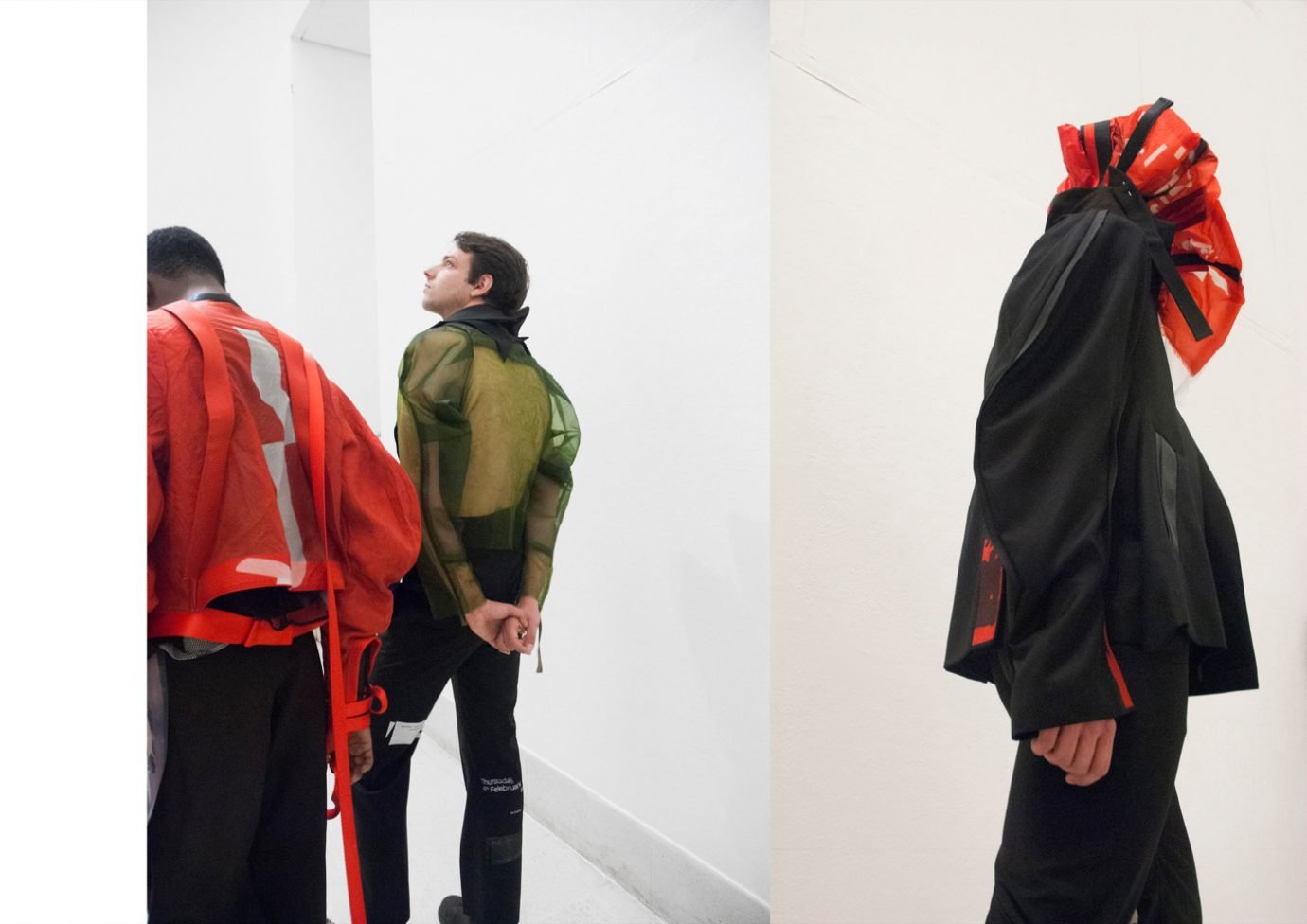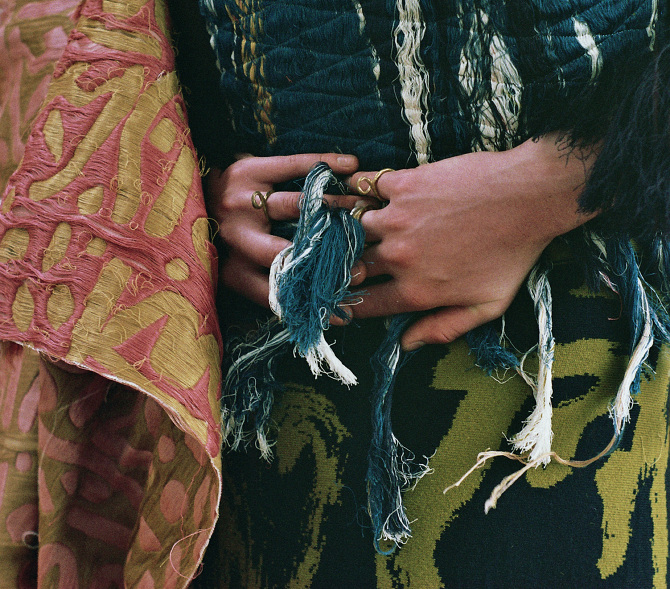Coming from a confluence of cultures, Lin is interested in a multi-disciplinary approach to design and intrigued by the shifting tensions between opposites. The name of her past collection, Alone Together (2014), might sound oxymoronic at first; but it represents a duality that is certainly omnipresent in life, be it in brief moments or enduring phases. Likewise, she explored the dichotomy of consciousness and unconsciousness in The Sleepwalker (2015). “It’s a natural occurrence that I recognise in life and it became a recurrent theme for my collections.” She also attributes this penchant for the extreme opposite of things to her Zodiac sign (Gemini, of course). To Lin, design always comes from a place that’s personal and intimate – her experiences and the environments she engages with.
RCA grad Yvonne Lin loves oppositions
Her graduate collection, Vulnus Cura, looks closely at brokenness as a process of mending
Coming from a small town in China, art was never really more than a hobby for Yvonne Lin. Graduating from RCA with a Masters in Design seems almost surreal to the Chinese-Canadian designer, who recalls watching a small fashion show organised amongst students on the sewing course in her high school as the beginning of her interest in fashion.
Her recent graduate collection at RCA is no exception. Derived from the Latin words for to wound and to heal, Vulnus Cura looks closely at brokenness as a process of mending. “Mending what?” One might ask. The cracks in our society and a lost innocence that comes with growing up. “I’m not sure if it’s the age or simply our generation having greater awareness, but I feel there’s so many things happening in this society that are wounding. I wanted to reflect that process in my design, reveal what is broken and confront the problems affecting us.” Expressing her disappointment at our current state of affairs – whether politically, socially or psychologically, because ultimately, they all add up – Lin explains there’s a stigma around adulthood prohibiting one from being vulnerable or revealing it, which potentially hinders recovery. Because of the pressure to appear strong and hide our weaknesses, we evade problems rather than accepting and resolving them. But Lin believes the reverse is true, and ever necessary. “It is courageous to allow ourselves to be vulnerable. I am not saying we have to be weak; but only by accepting what’s flawed, or wounded, can we improve, find reconciliation, gain resilience. We should allow ourselves to recover.”
Confronting our emotions and vulnerability formed a big part of Lin’s research. She discovered that many suicides were happening in Post-WWII Prague and someone started a smiling club as a joke; teaching war survivors how to force back their smiles is a somewhat sinister yet tragic method to alleviate the trauma and guilt. While Lin’s collection embraces a similar melancholic note of confronting the wounded, she still retains a sense of optimism at the end, and she finds her answer in the children. “They speak hope. Whatever you do in your life, whenever you are going through a tough time, you will find ways of staying optimistic.” As much as they might be physically fragile, children are undoubtedly the best at staying true to their emotions, unjaded by the world. Lin finds their untainted naivety to be the purest form of humanity – the winged pacifier in the last look says it all.
Adopting a purist heart for this collection, Lin used a combination of draping and tailoring techniques that do not run astray either. All the lines, seams and fabric are reduced to the bare minimum – anything that is unnecessary is eliminated. The sleeves and torso are made from one piece of fabric while the jacket consists of three or four pieces held together by one or two seams. “They are there because they need to be.” But Lin’s minimalist design approach runs deeper than it looks. The trousers with a slit at the back, leaving the model bare, recreates the discomfort and insecurity of seeming ‘exposed’. Barely held together by an elastic fastening, it speaks of how precarious the process of healing is. The garments she has created with a singular seam represents a way of reconciliation.
Reflecting on the designing process Lin feels as though designing garments is akin to creating a prop for a larger scheme of things. Like any other field, the fashion industry is dependent on more than just the designer. “The first step is finishing the clothes. Then, there’s so much more to it that comes after.” Photographers, dancers, stylists, you name it. As the market becomes increasingly saturated, driving the next invention requires collaborative effort across artistic practices. Lin’s utopia rests on that belief: a collective of creatives with a similar philosophy, ideology or aesthetic where each uses their own tools to create and innovate together. “We speak our own languages but from the same concept.”
Lin’s quiet confidence exudes the more you get to know her and while majority of the world is fixated on keeping up with trends, Lin thinks how you dress isn’t as important as how you move with and in it. “Through the garment, I see you. It’s a layer of you that you are showing to the world.” While she was constantly questioning what defined her and her style since her year at CSM, she was frequently frustrated at having parts of her ideas lost in translation. Lin would draw inspiration from other works, be it performances or architecture, but there was always a certain part of ‘her’ missing. “Designing is honest. If your mind is not clear, your design will show it.” Yet it seemed to me that she had already subconsciously developed her own language over the years. A look over her past collections and immediately reveals a motif of hands. When asked if this was intentional or purely a coincidence, Lin laughed, “I don’t know what it was about the hands that intrigued me so, subconsciously. I was looking for an image that best summarized my very first collection. On hindsight, I think hands represent the body’s relationship with fashion to me.” An intimate and personal part of our body with the ability to communicate an infinite array of emotions to other people in a single gesture, the hands are Lin’s way of communicating her multitude of ideas beyond the corporeal. “You can present on the body but it doesn’t have to be on the body itself; you can define what the body is.”
While starting her own brand might be a plan in the future, Lin currently finds it equally rewarding working for other people as long as it’s an environment that challenges and inspires her. Understanding the responsibility of launching a label, she prefers to focus on design rather than dividing her energy between the business and creative sides. But having dabbled in 3D printing and laser cutting, the young designer who wishes to remain current with technology and the times seems more than ready to take on the fashion world.

